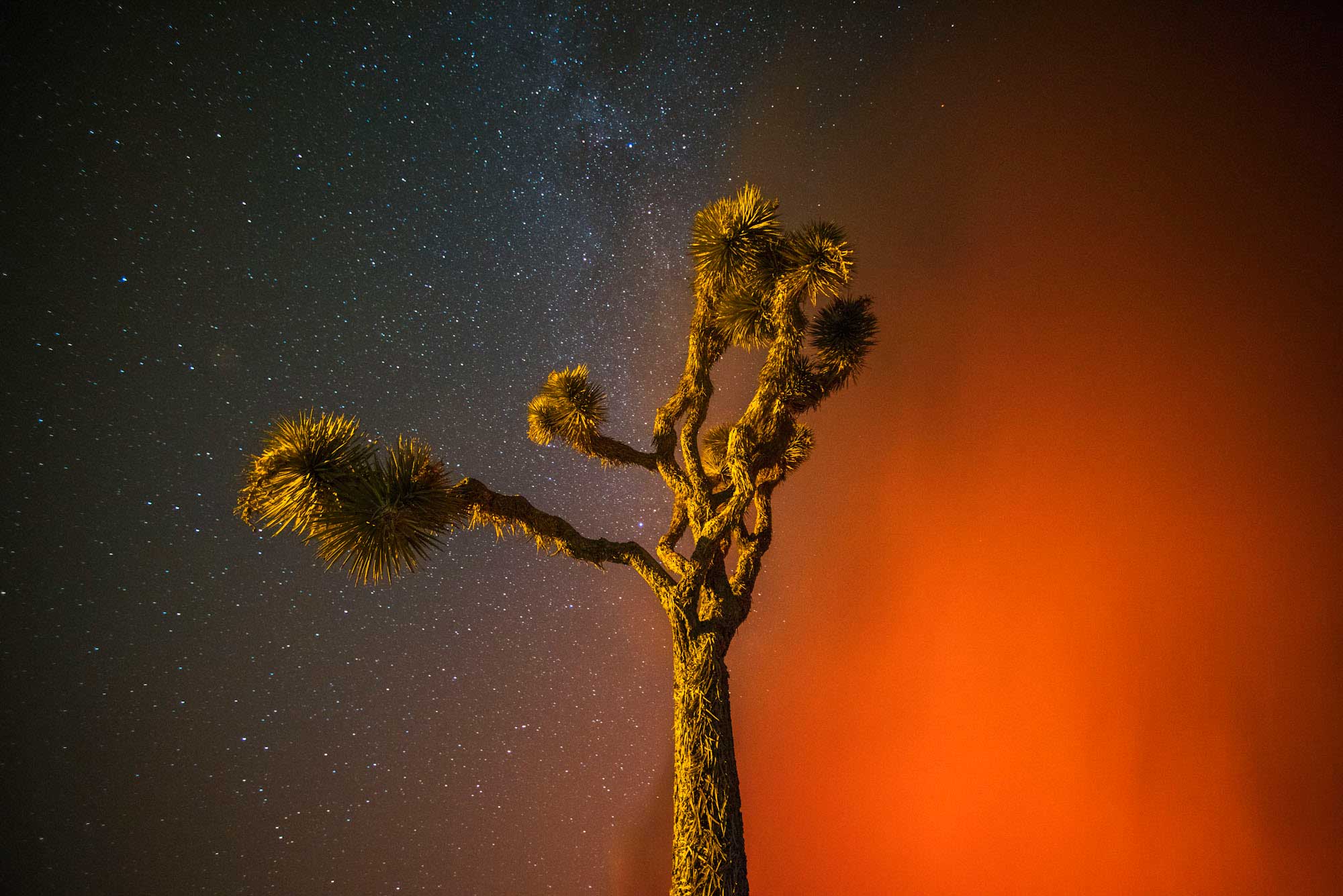
Freelance photographer Stuart Palley has been chasing blazes for the past three years, documenting one of the most dramatic consequences of California’s extended drought.
Over the past week, TIME LightBox shared on the @timelightbox Instagram feed, a series of photographs Palley shot this past month as Lake Fire has devastated thousands of square miles of forests near San Bernardino. He explains his work.
Olivier Laurent: Why are you doing this work?
Stuart Palley: My earliest memories of wild land fire are watching the 1993 Laguna Beach Fire on TV as a five-year old. The Santa Ana Wind-fueled inferno burned hundreds of homes just miles from where I grew up. In high school, ash floated down from the sky onto the dance floor at the freshman Halloween dance during the 2003 California Fire Siege. I then had to leave school for a week and go out to the desert because the ash was causing my asthma to flare up. As I write the Homeowner Association is pulling out all the bushes where I live and replacing it with a drought-resistant grass.
Wildland fire is part of my life. As I returned from college and grad school in the Midwest, I came back to a California in severe drought, with brown hills, water restrictions, and wildfires worse than ever. The lake where I went to summer camp as a kid dried out, and the forest where my girlfriend and I drove on our first date burned over and is now closed.
Drought can be difficult to visualize but frequent wildfire is its most acute effect, so the images are about creating a visual record of wildfire. I want to show the public how the drought is causing these fires to burn intensely. Maybe the images pique their interest in wild land fire, and they go learn more on their own. If a homeowner clears defensible space or conserves water after looking at my work, then the project is a success.
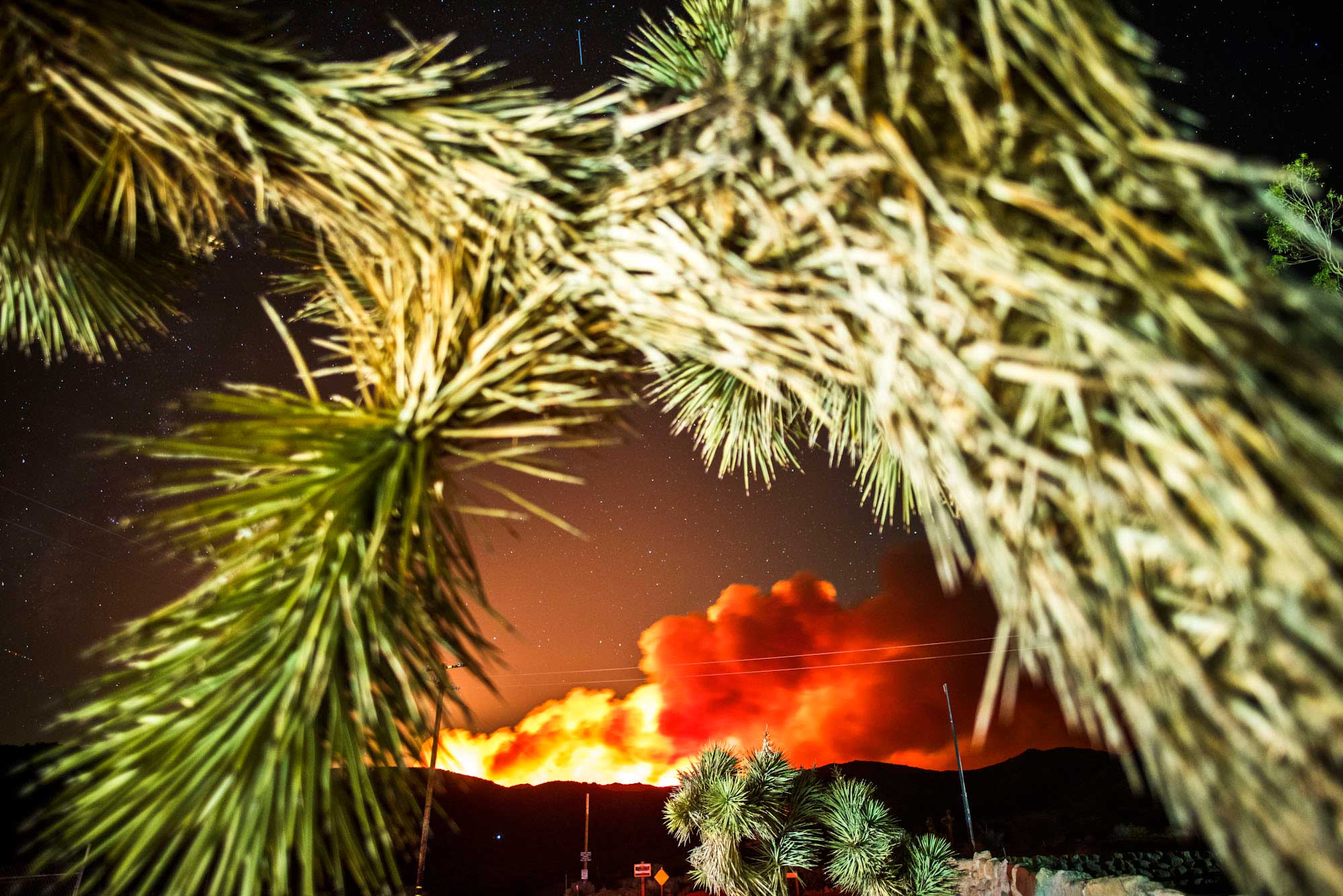
The project originally started as a reaction against tired and cliché coverage of wildfire. News stations simply zoom in on the biggest flame and focus on the aircraft dropping flame retardant, and that’s what everyone sees. There’s an eerie beauty to the fires burning, and at the end of the day, it’s a natural process that I want to show. Perhaps I can create some order out of chaos.
Finally, I wanted to do things right, educate myself and receive training, and go onto the fire line with the men and women who risk their lives to save peoples homes and lives.
Olivier Laurent: This is dangerous work. What steps are you taking to make sure you’re not running into potential risks?
Stuart Palley: I take multiple precautions to ensure I mitigate risk as much as possible and stay safe. My first priority is to stay out of the way of fire crews actually fighting the fire.
It would be naïve to say that you can precaution away all risk, because at the end of the day we’re dealing with nature: Fire does what fire wants. It is important to sometimes take a step back since no picture is worth your life or an injury. Firefighters do a dangerous job and I’m just there as an observer. I can leave anytime I want, but they’re working on orders, so I have a tremendous respect for them.
For the fire line, I have audited basic wild land fire training, and I own the Personal Protective Equipment (PPE) required, including a new generation fire shelter, NFPA approved boots. I’ve been to about 40 wildfires at this point, and have been fortunate to learn from firefighters at each one.
Also, I have radios programmed with the frequencies used at fires, so I can monitor traffic and retain situational awareness at a fire should there be an adverse weather change. I have a colleague who is a fire captain with an agency, who, when off duty accompanies me to some fires to act as a liaison and guide. Its invaluable to have an expert with 25 years of experience teach me about fire behavior as it’s happening right in front of us.
Olivier Laurent: Tell me more about this particular fire. What’s your take on it?
Stuart Palley: Given the extreme drought conditions, the Lake Fire unfortunately burned intensely and spread quickly. I don’t think many firefighters were surprised by how fast and intensely the fire burned. Until the drought ends, or we get a miracle El Nino this winter, some fires will continue to burn like the Lake Fire across the west. In the last few days, destructive fires burned in Washington, and more than one million acres in Alaska were on fire.
The Lake Fire burned from the woods of the San Bernardino National Forest not far from Big Bear at 6,000 feet to the high desert near Pioneertown over many miles. Basically, wildland firefighters have come to expect this extreme fire behavior earlier and earlier in the summer in each successive season.
We are seeing fuel moisture levels, which is a way of measuring the amount of water in given types of trees and shrubs, plummet to levels seen in late August. This is due to the drought. Sixty percent is considered the “critical” threshold for fuels in the wild land firefighting world, and parts of the San Bernardino National Forest are already very near that level. This critical threshold is what we normally see in September-November when Santa Ana Winds historically have caused the worst fires in Southern California.
Chasing Blazes: Sublime Photos of Wildfires
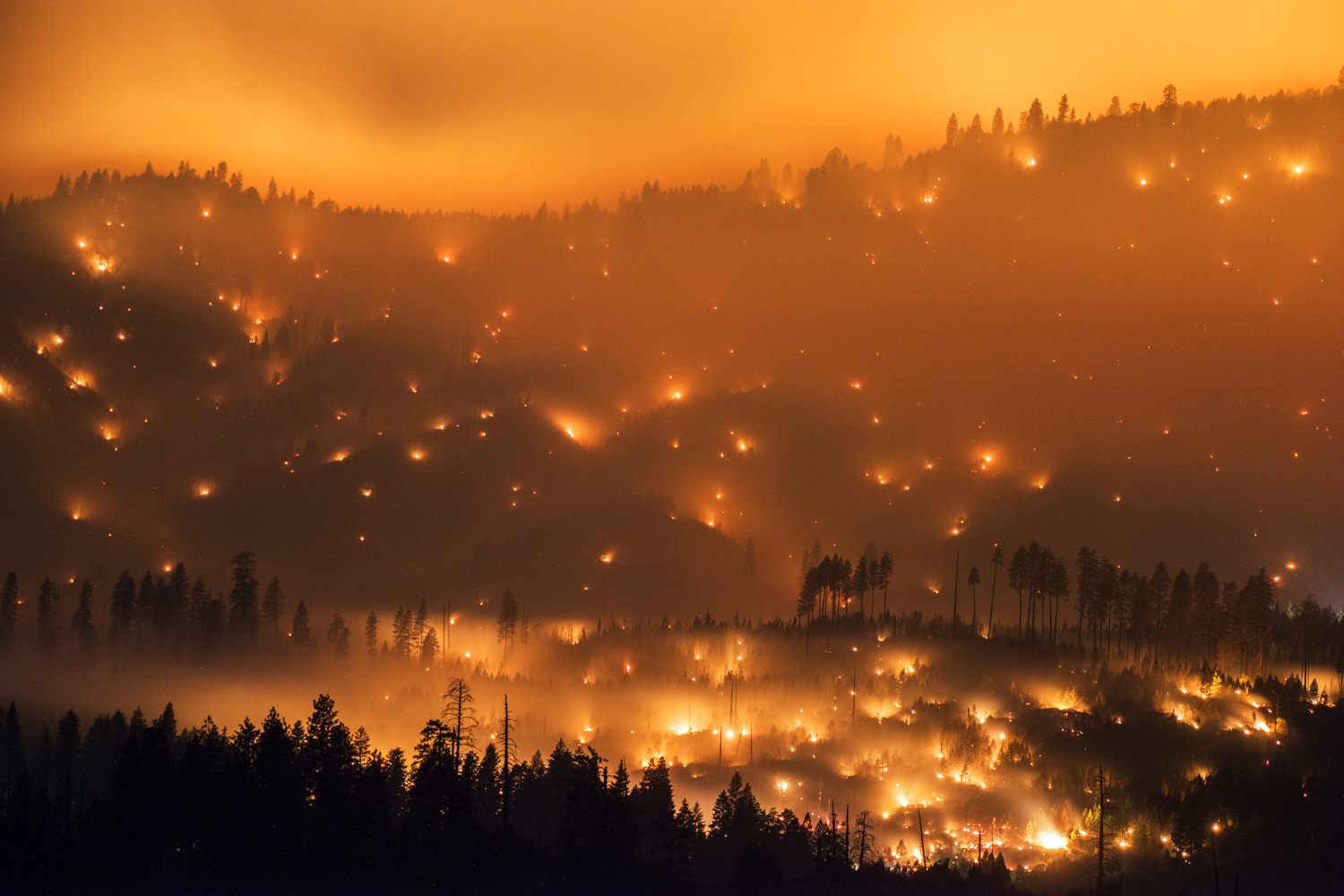
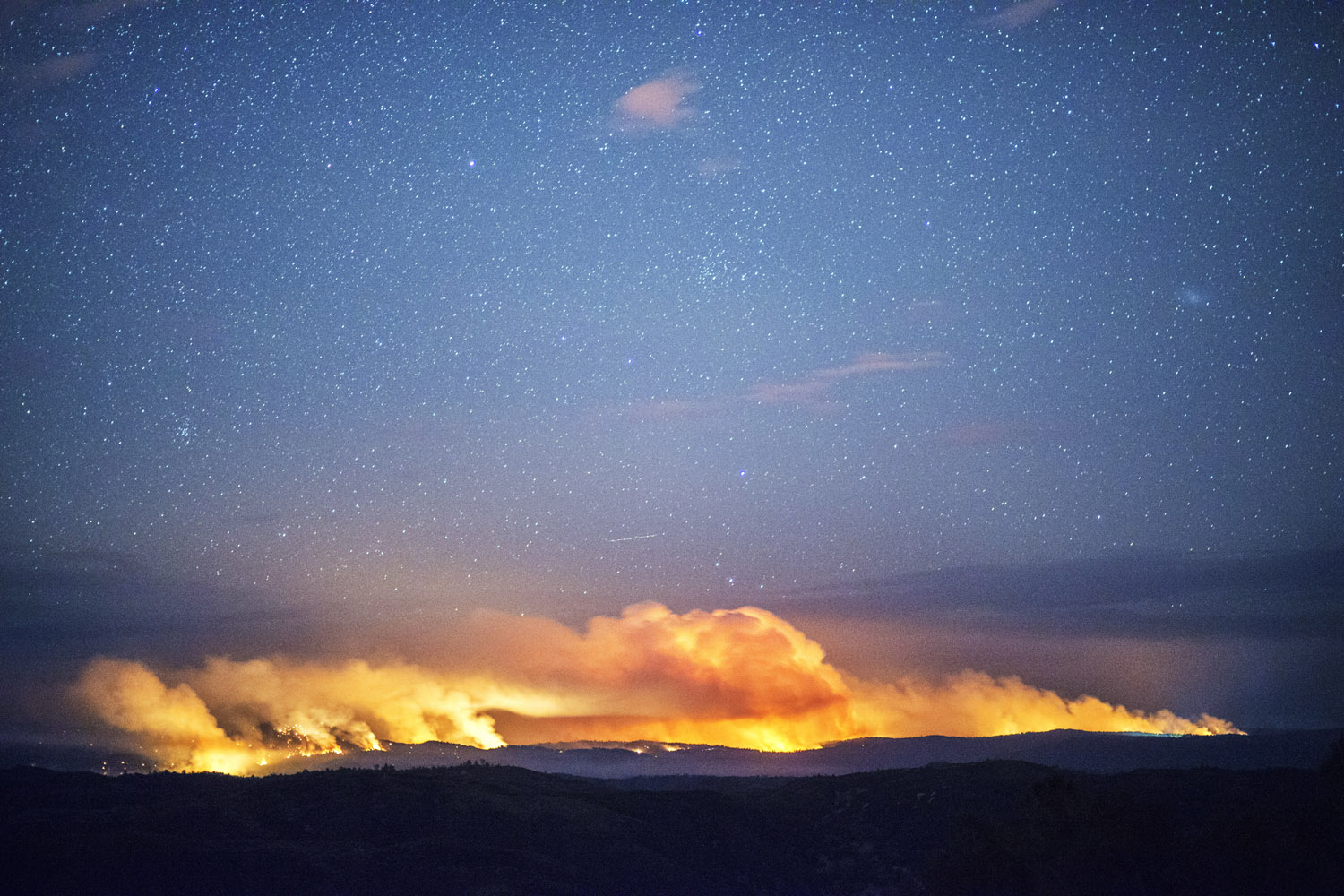
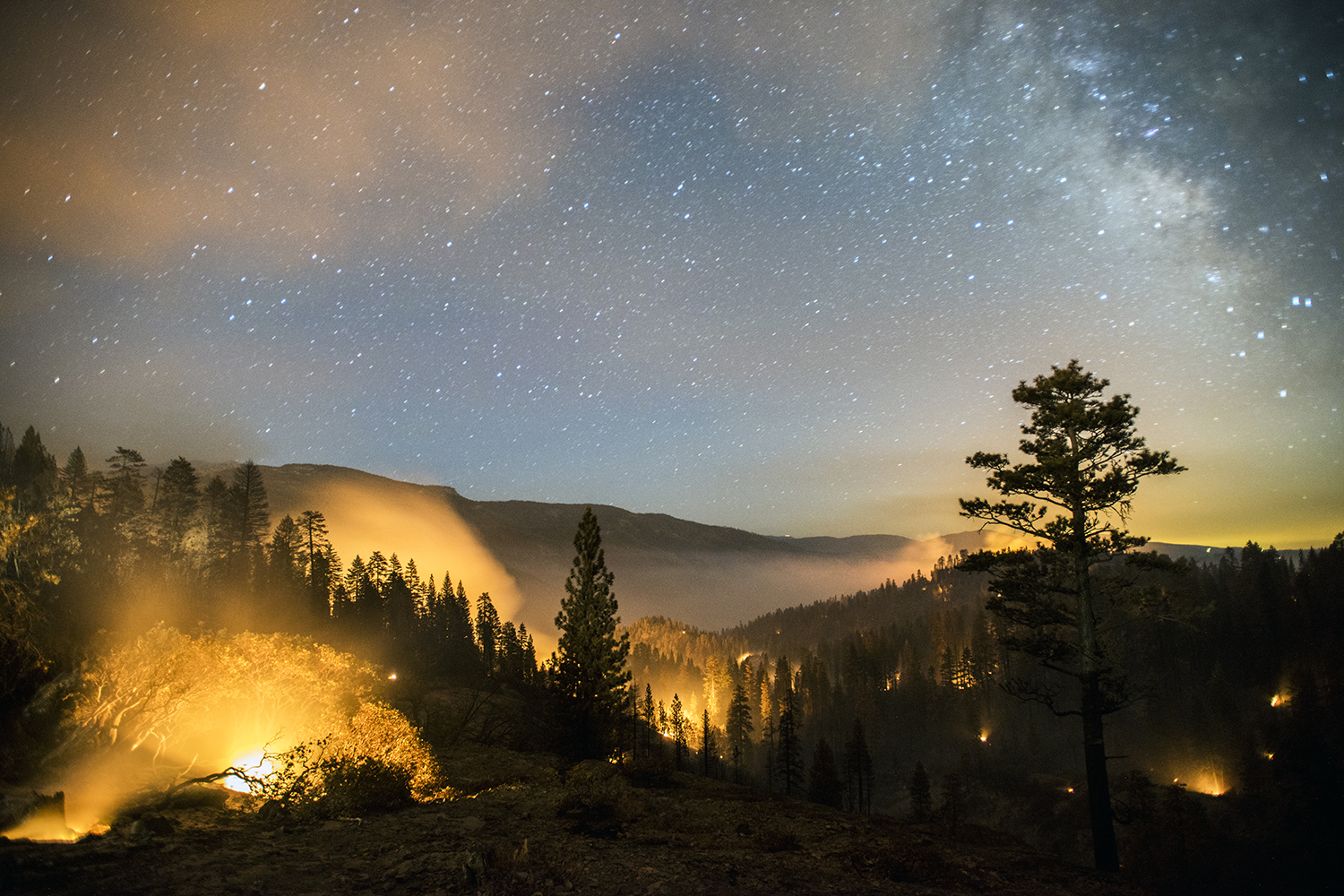
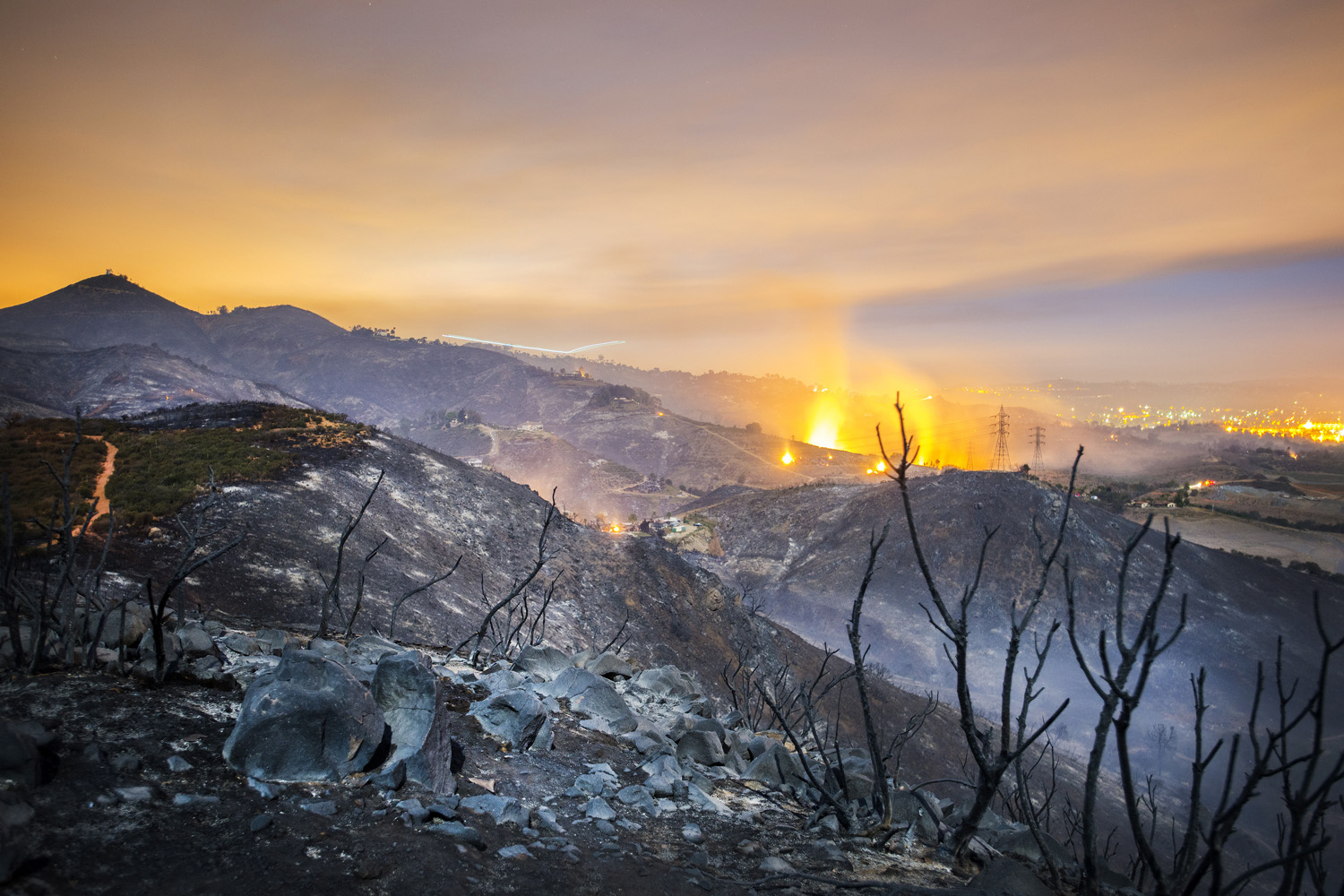

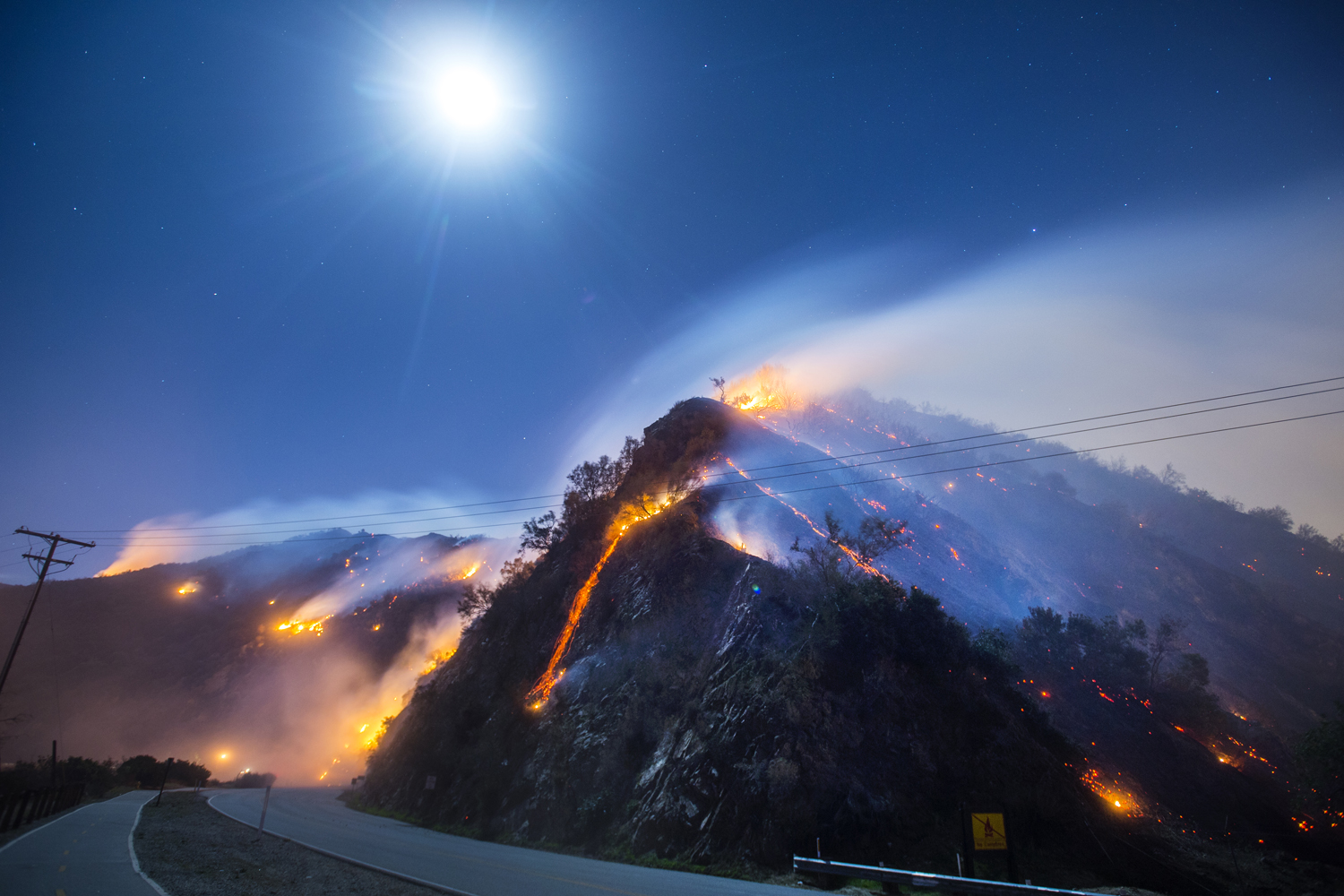
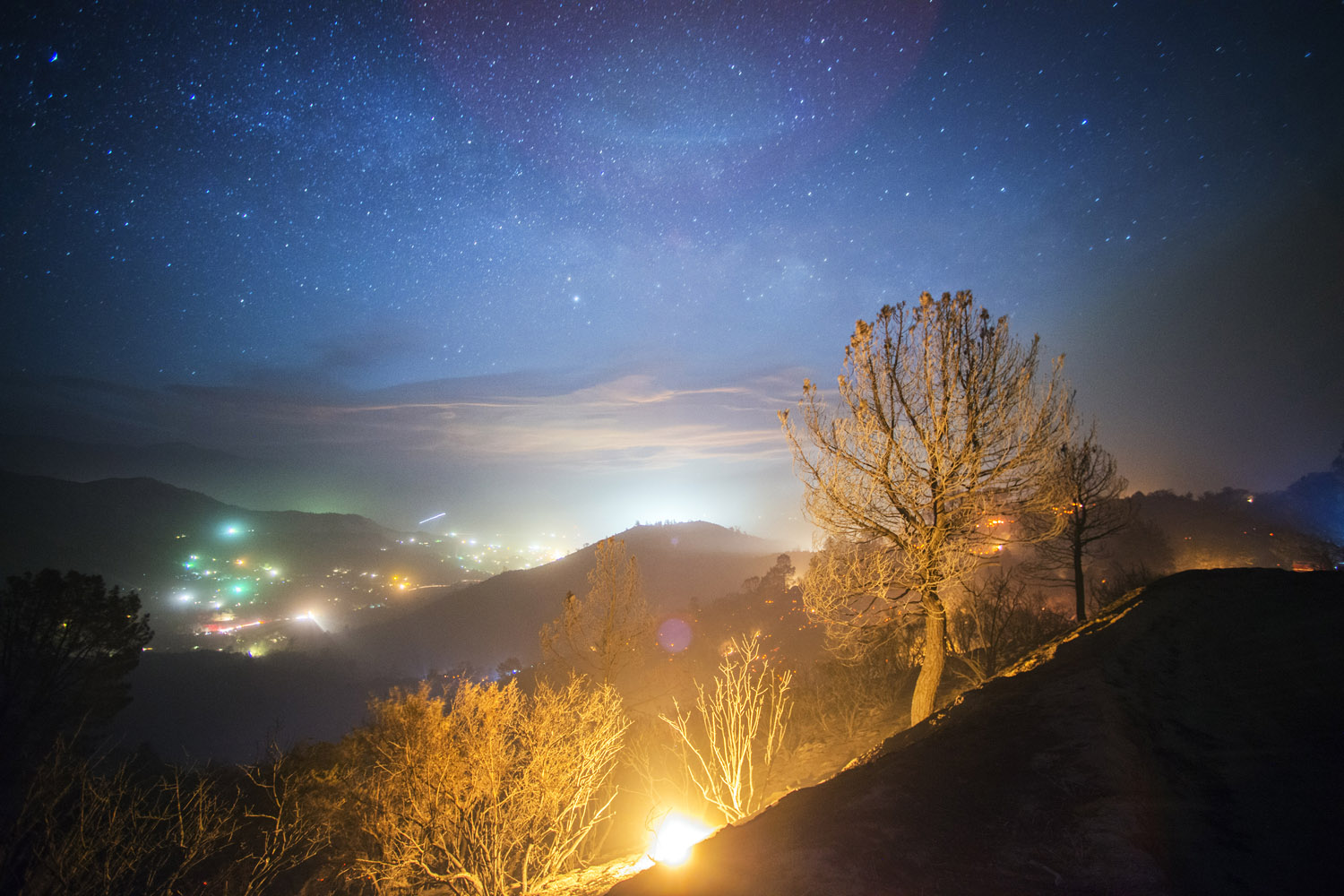
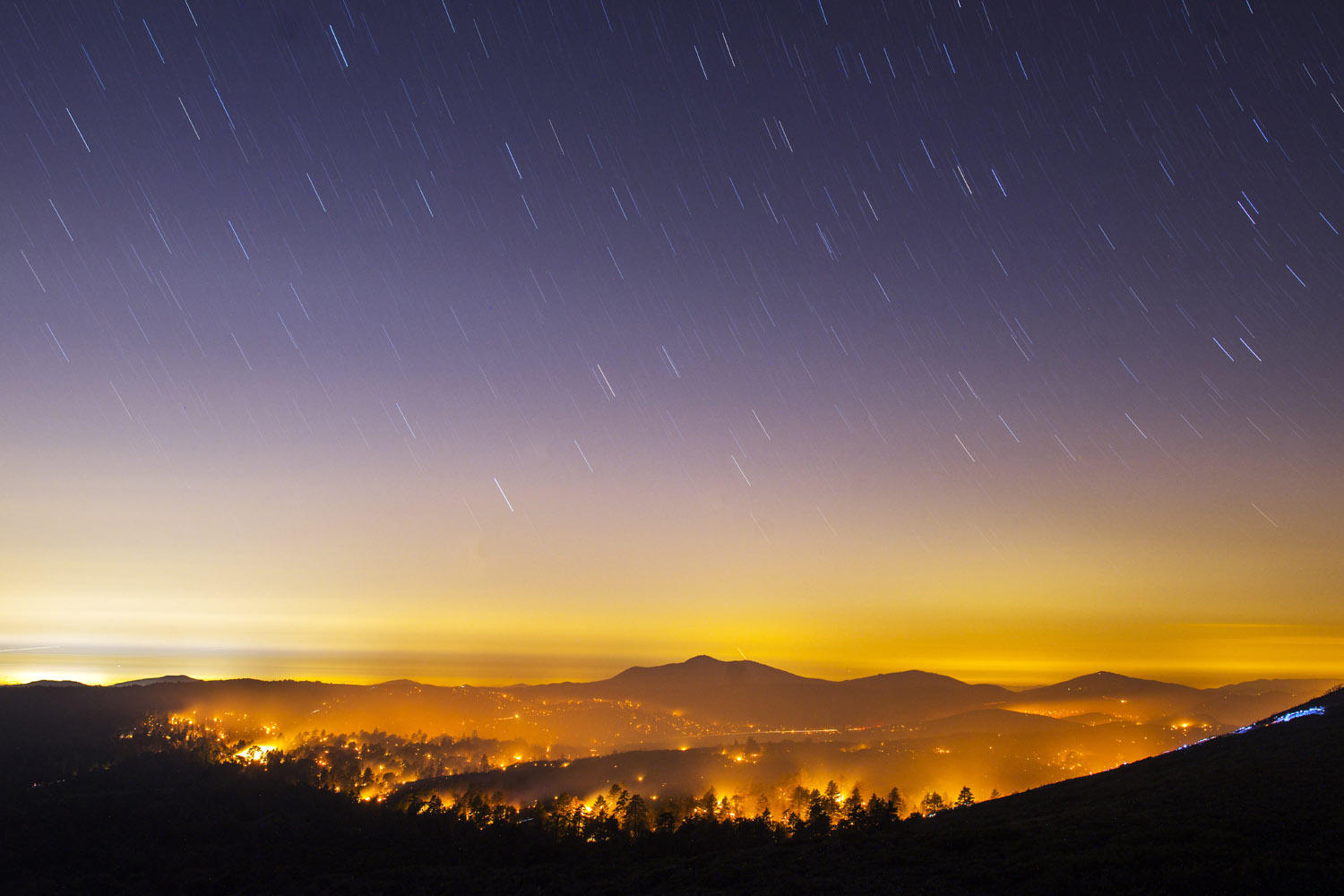
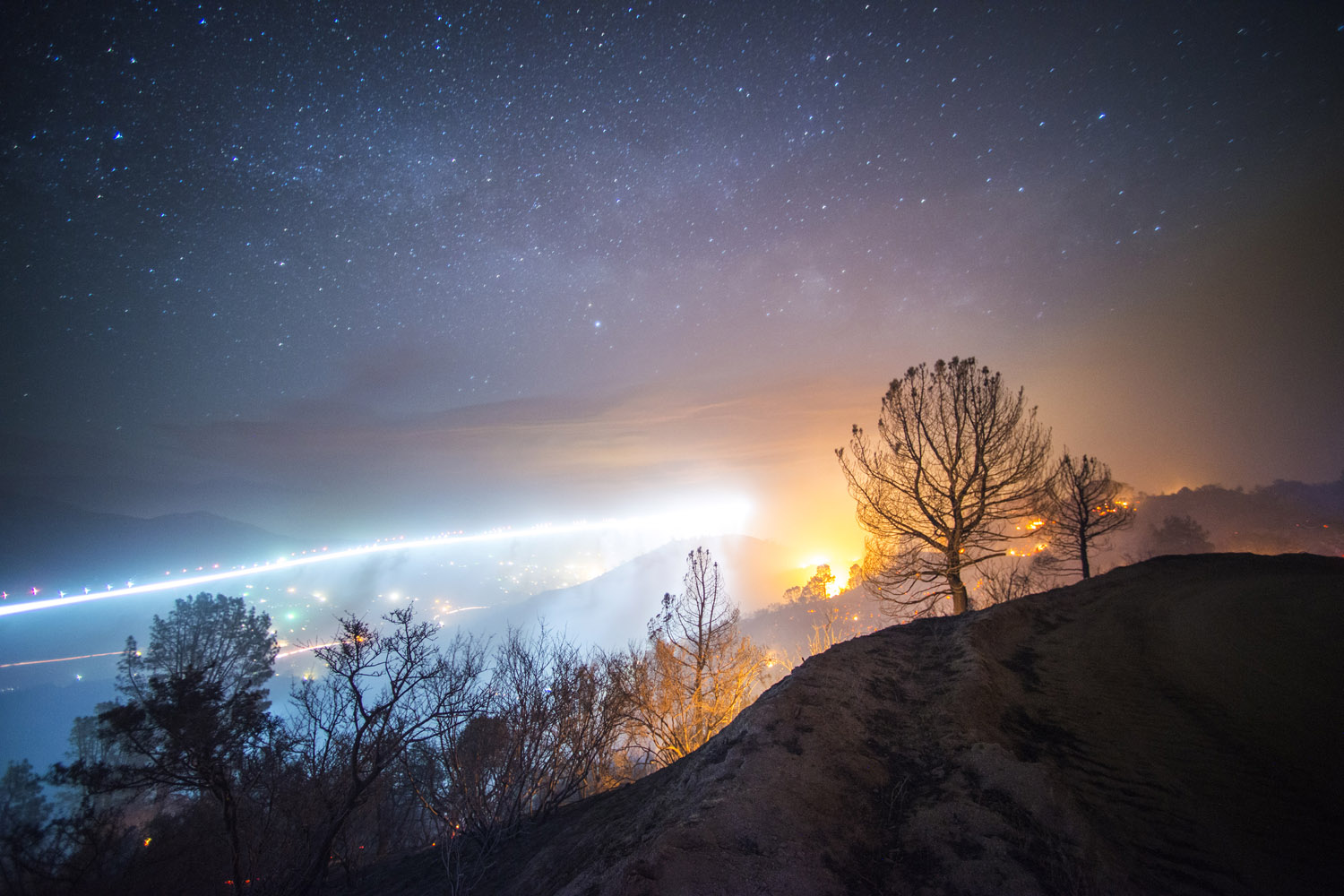

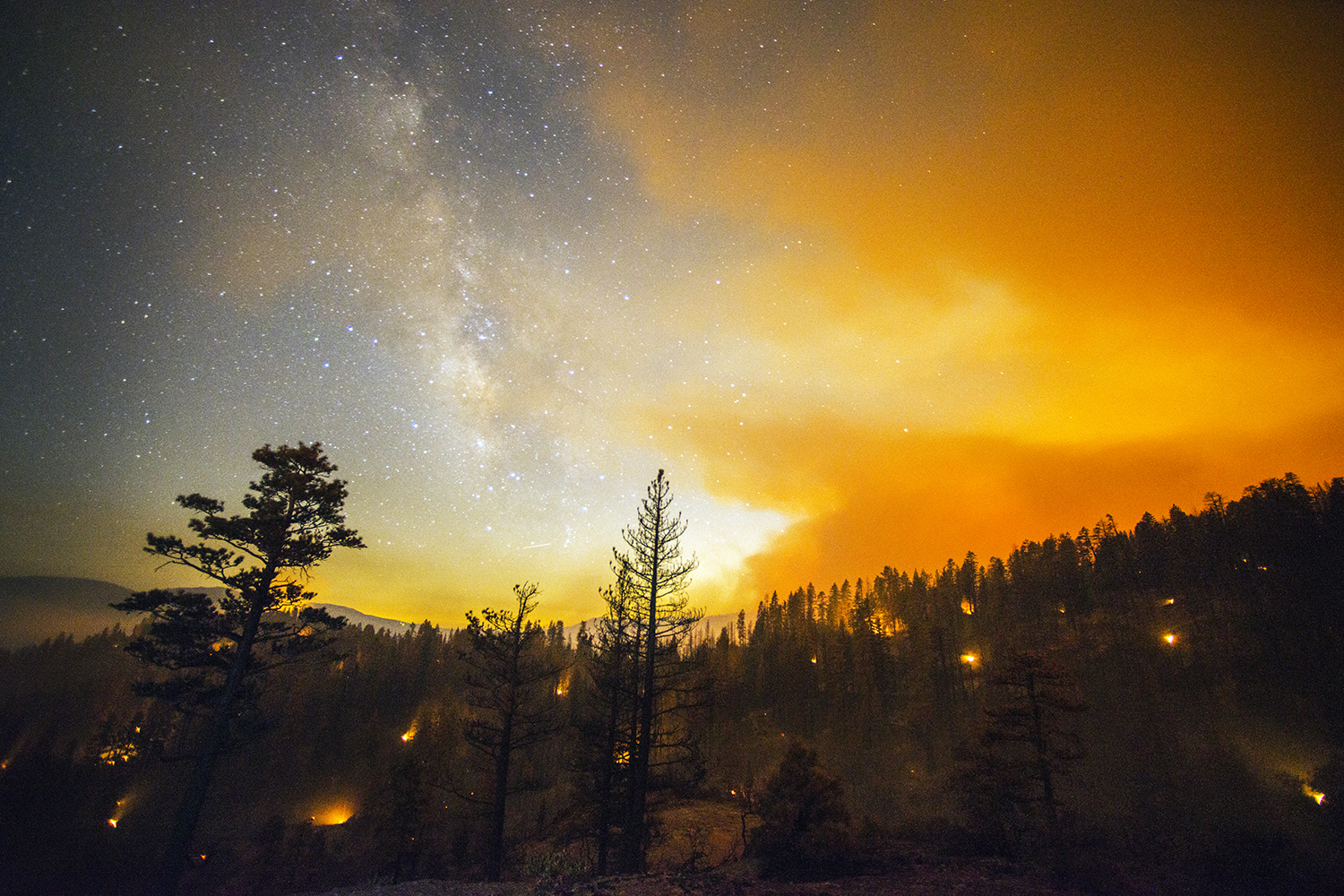
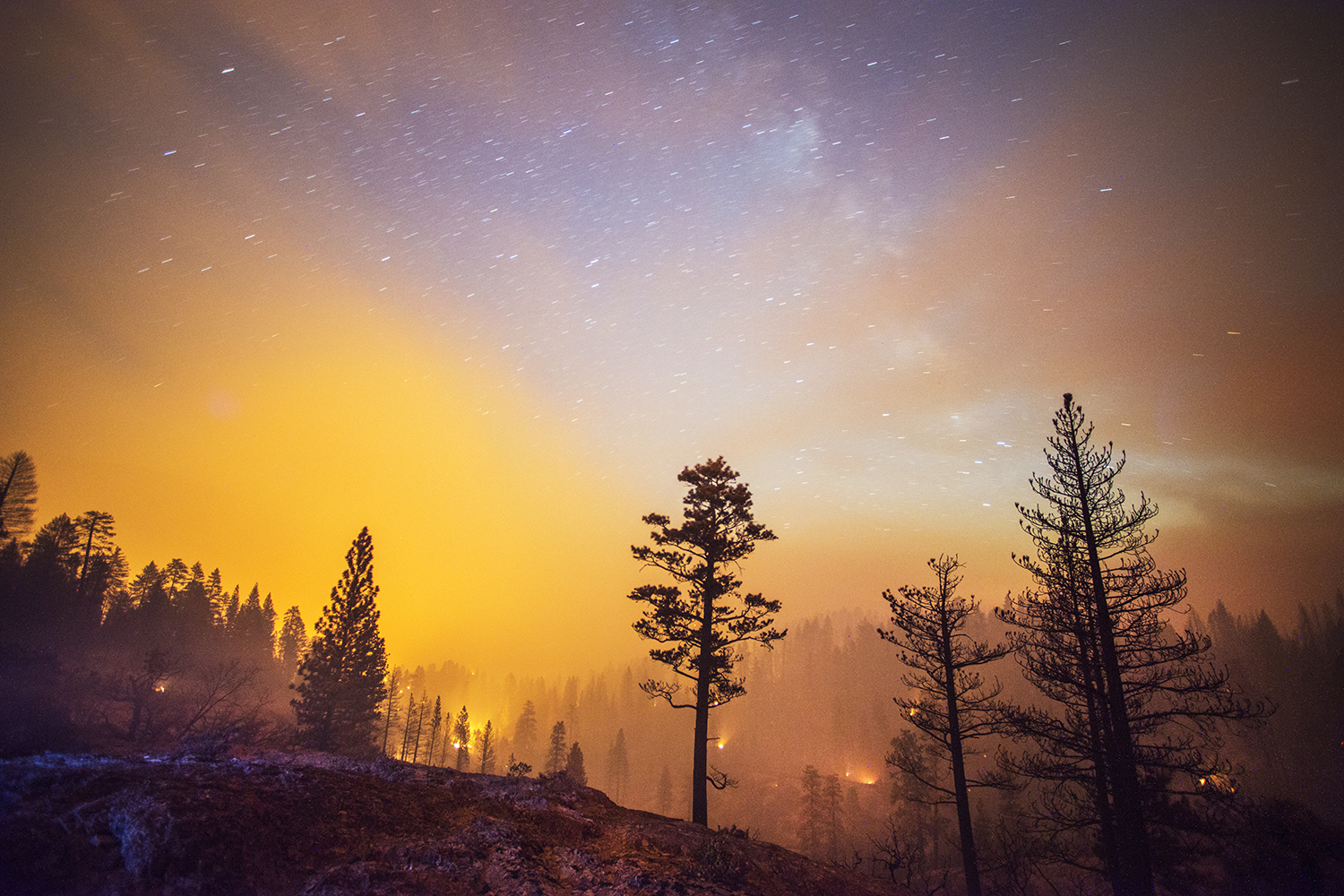
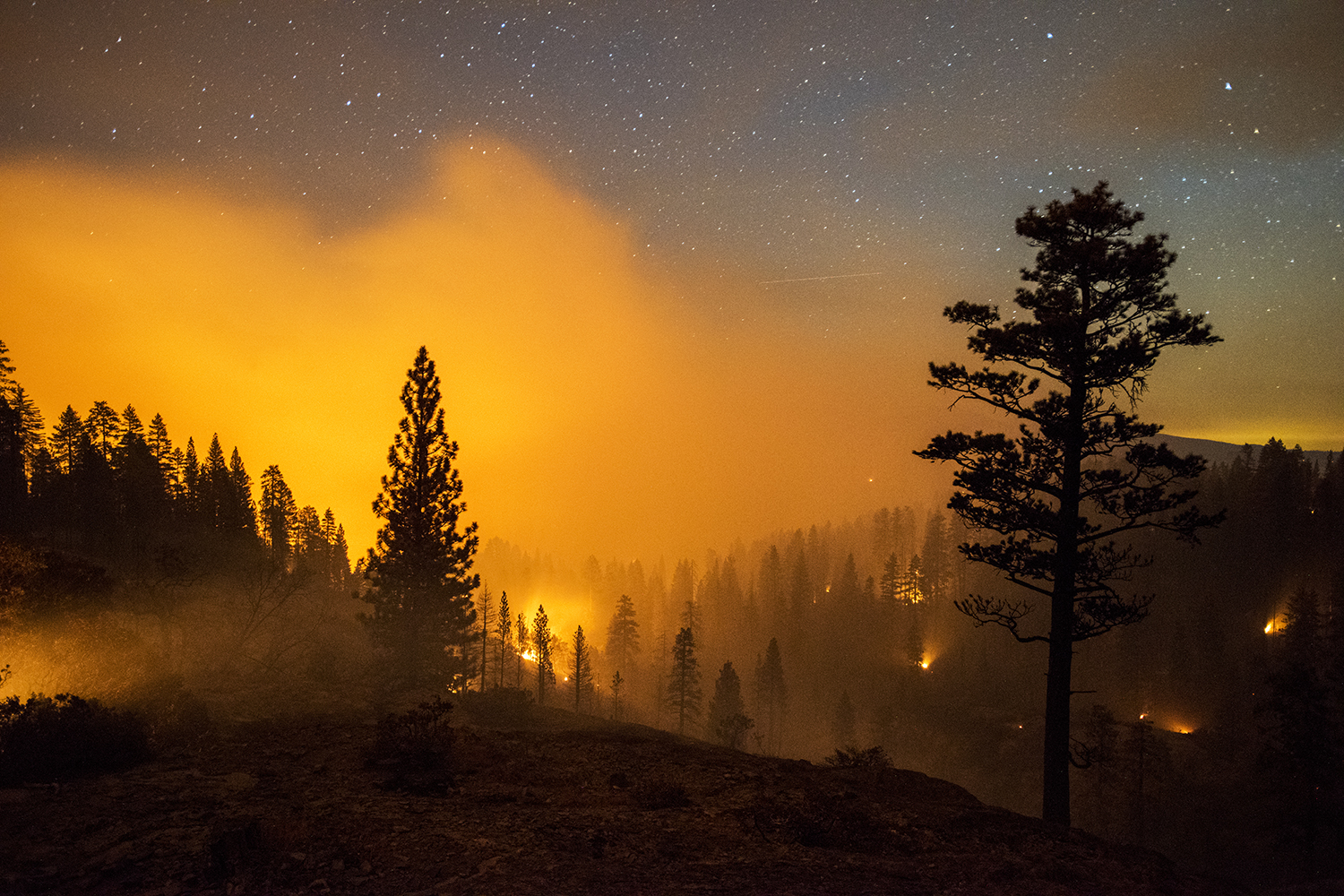
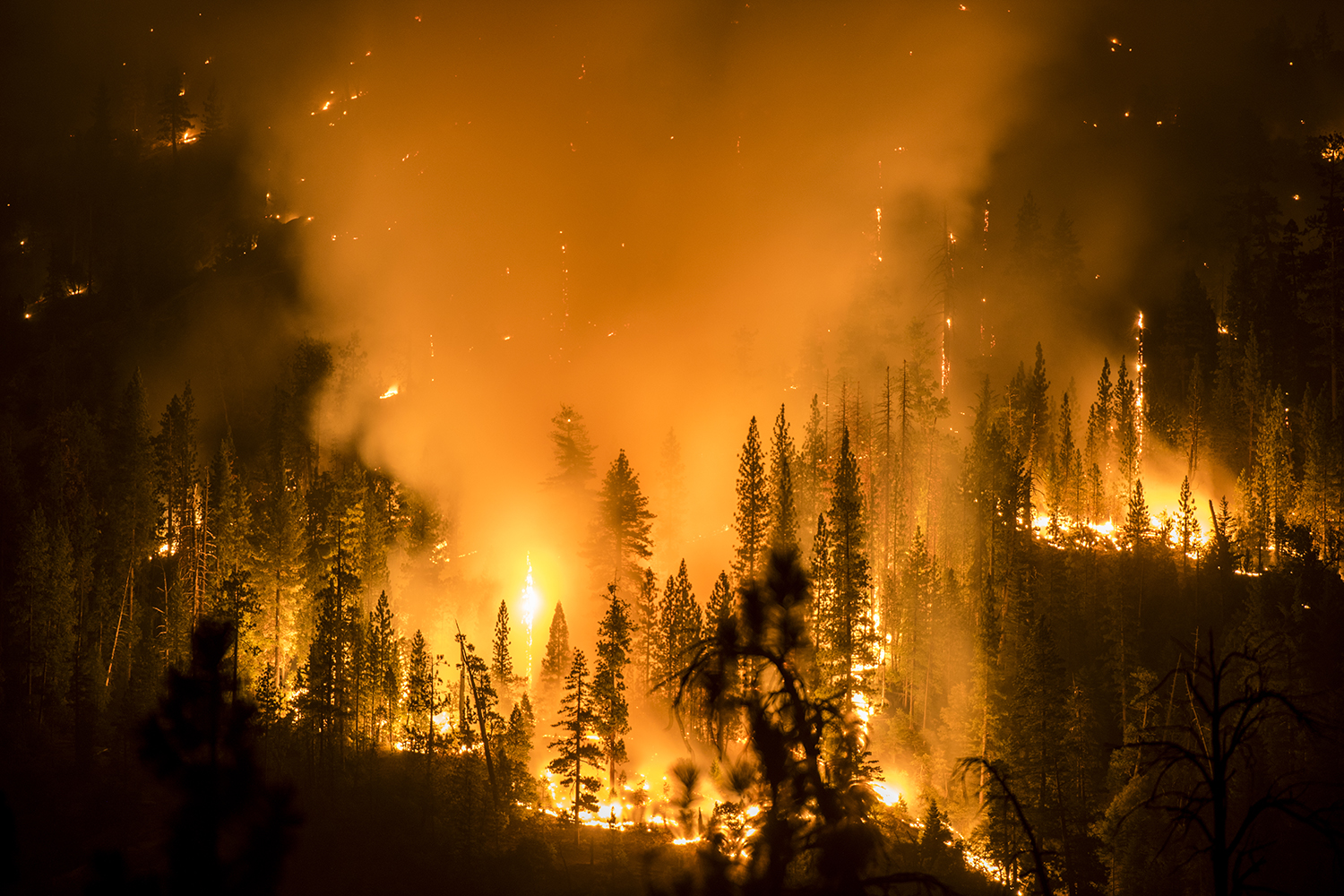

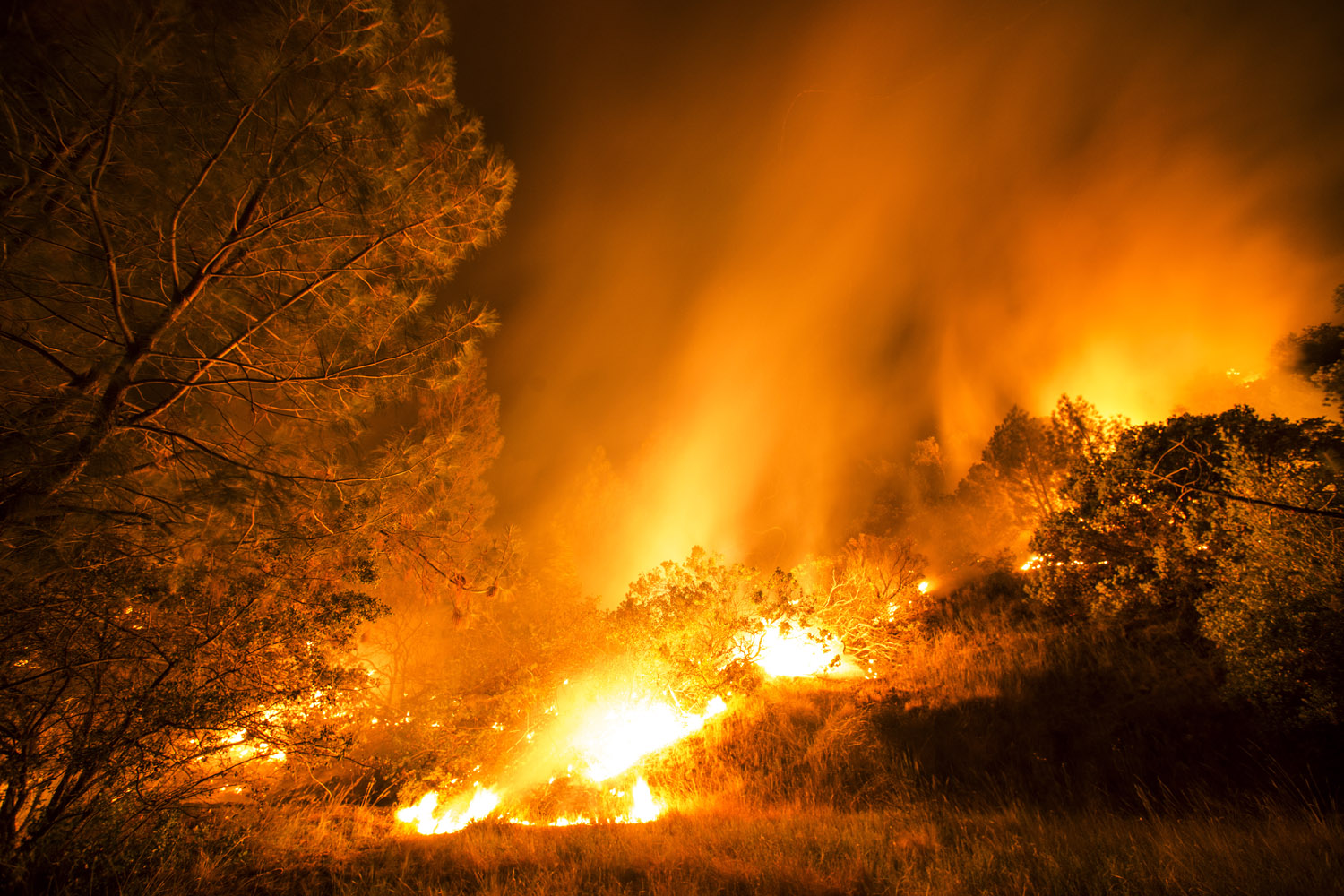

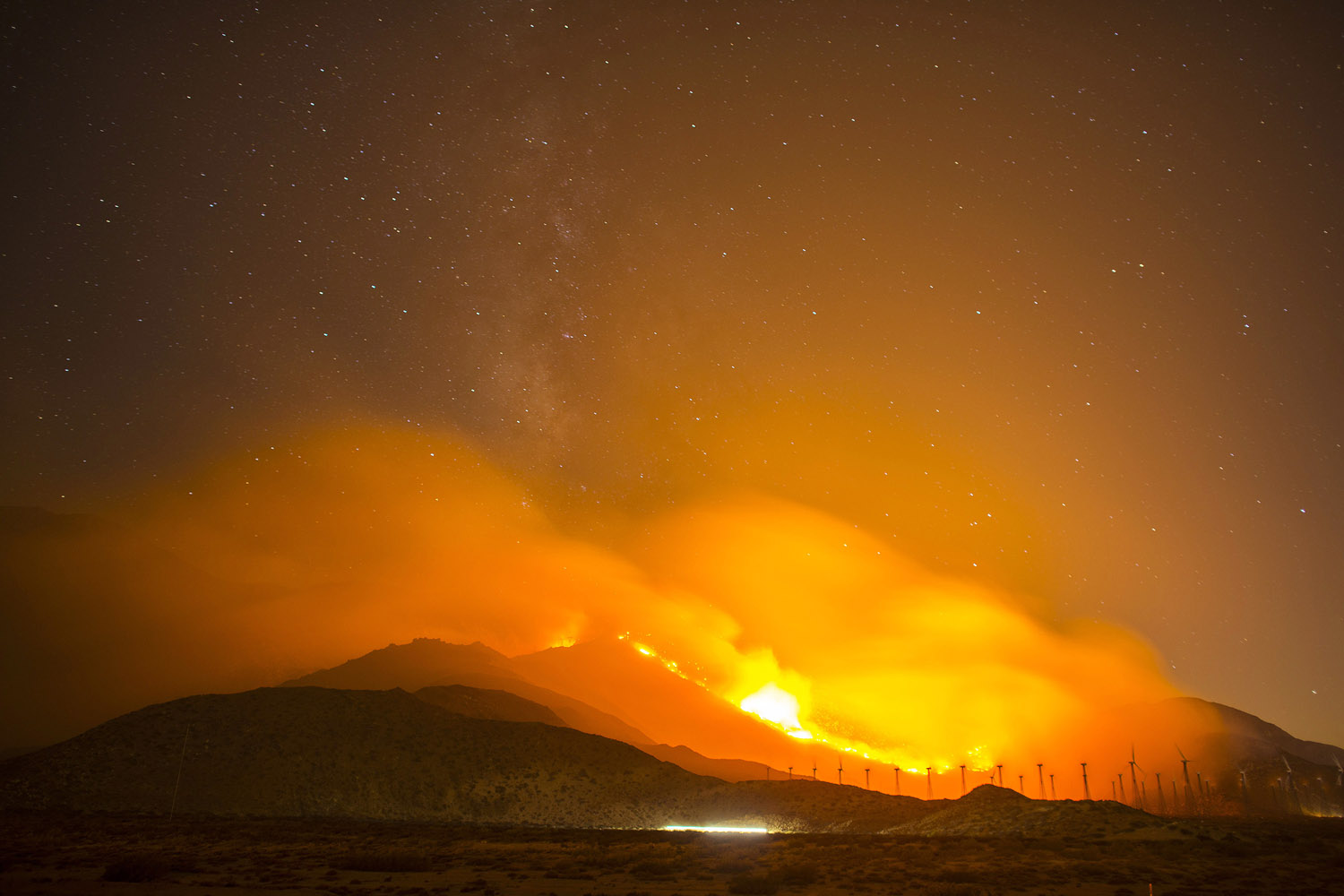


Further, the Bark Beetle, which ravaged forests in the west in the last decade, is hitting trees again across California Forests. An aerial survey by the US Forest Service in 2015 estimated tree mortality at around 12 million trees throughout the forests here, many probably due to bark beetle kill. Trees normally use sap to fight off bark beetles boring into their trunks, and when the trees are drought stressed, they do not have or produce enough sap to fight off the beetles. The bark beetles signal to other beetles to attack the same tree, and the tree succumbs to the infestation. This happens over and over again in the forest, essentially putting large candlesticks of dead, dry, wood, amongst living forest, creating explosive fire conditions.
Add to that triple digit heat when the Lake Fire started, and single digit humidity, and an ignition source in a hard-to-reach area, and you have the conditions for a large fire. The Lake Fire is nature taking its course in the face of extended drought, and until the drought ends, we will continue to see these types of fires.
Stuart Palley is a Los Angeles based photographer documenting wildfires, backroads and night skies. Follow him on Instagram @stuartpalley.
Follow TIME LightBox on Instagram @timelightbox.
Olivier Laurent is the editor of TIME LightBox. Follow him on Twitter and Instagram @olivierclaurent


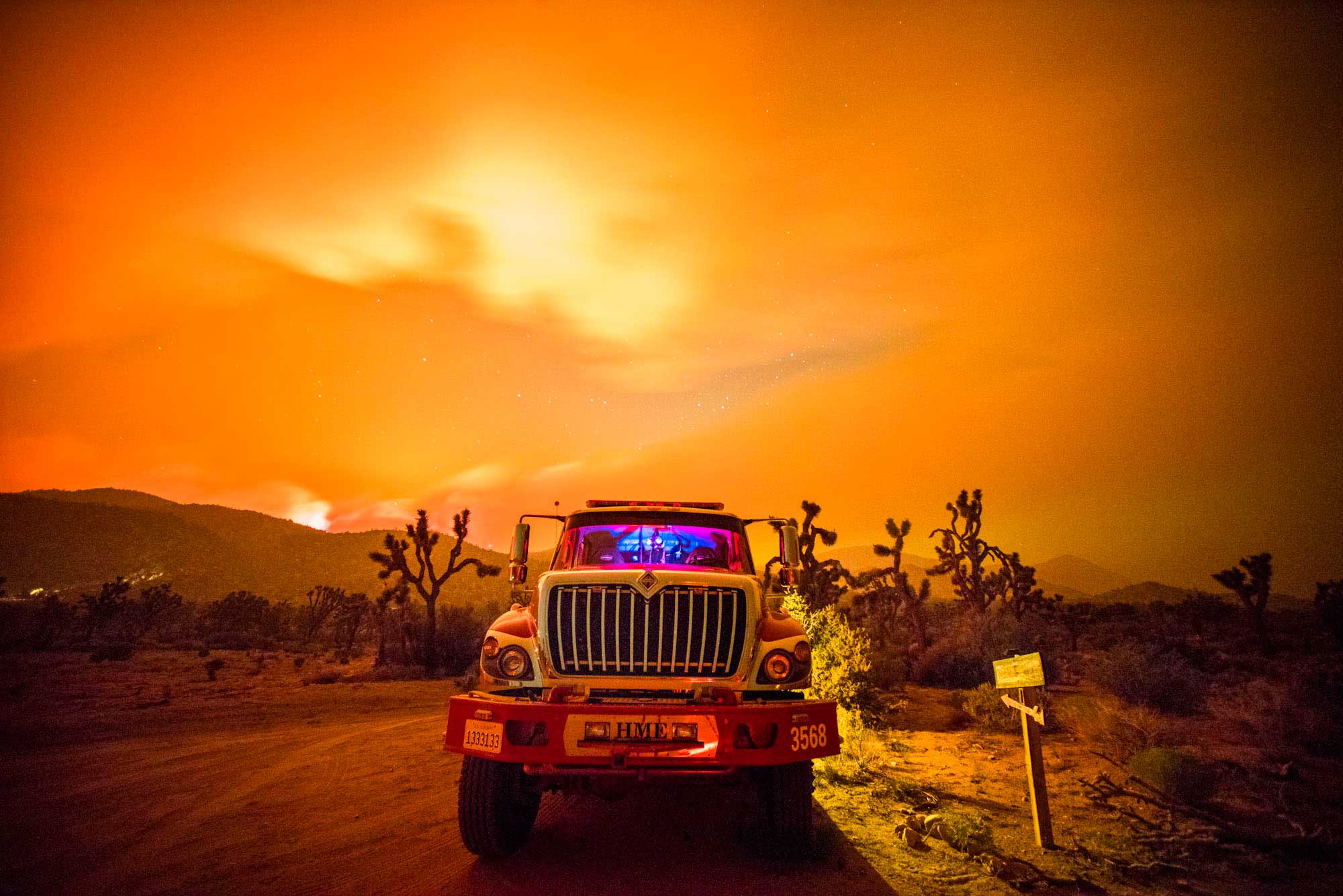
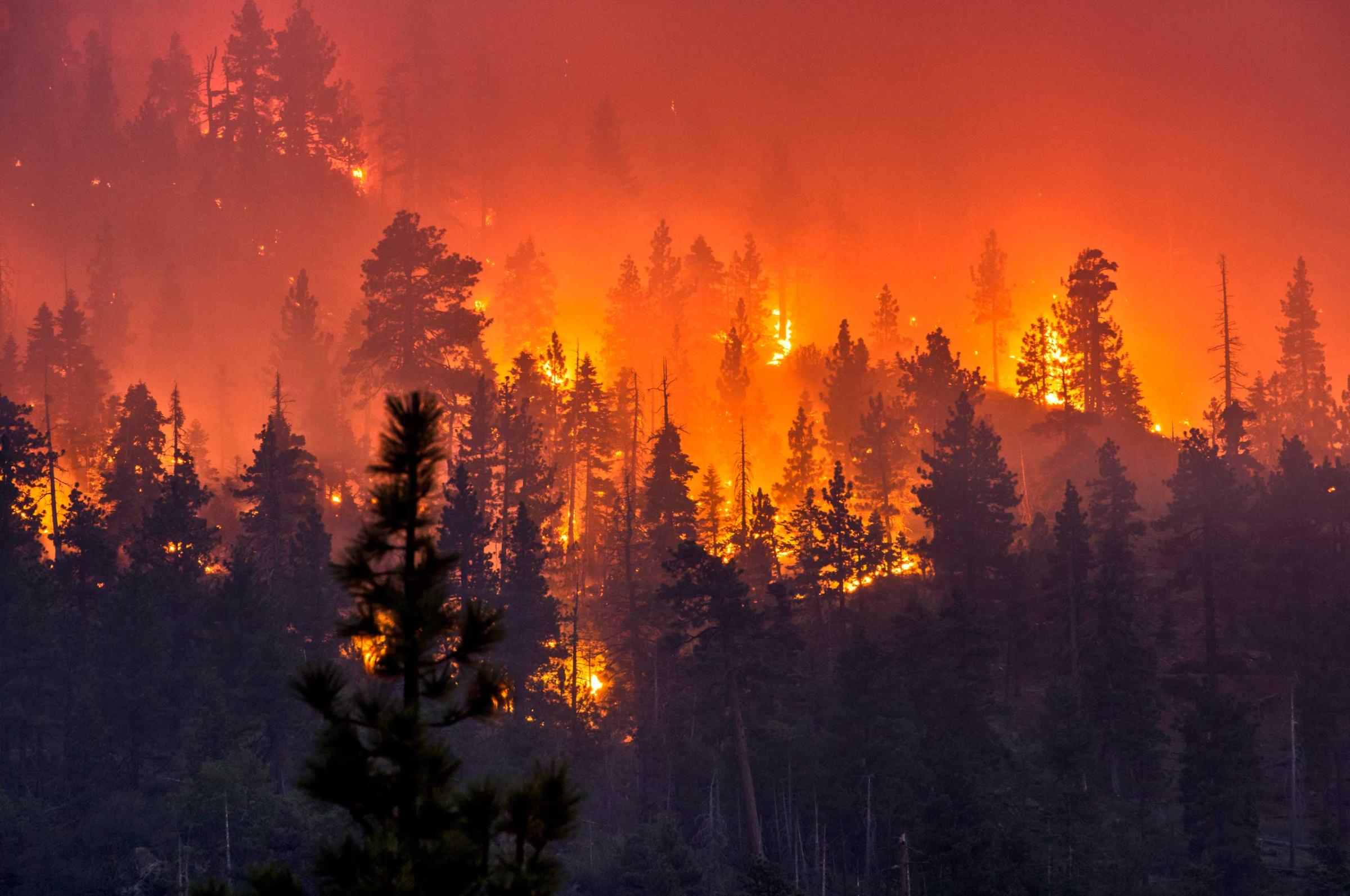

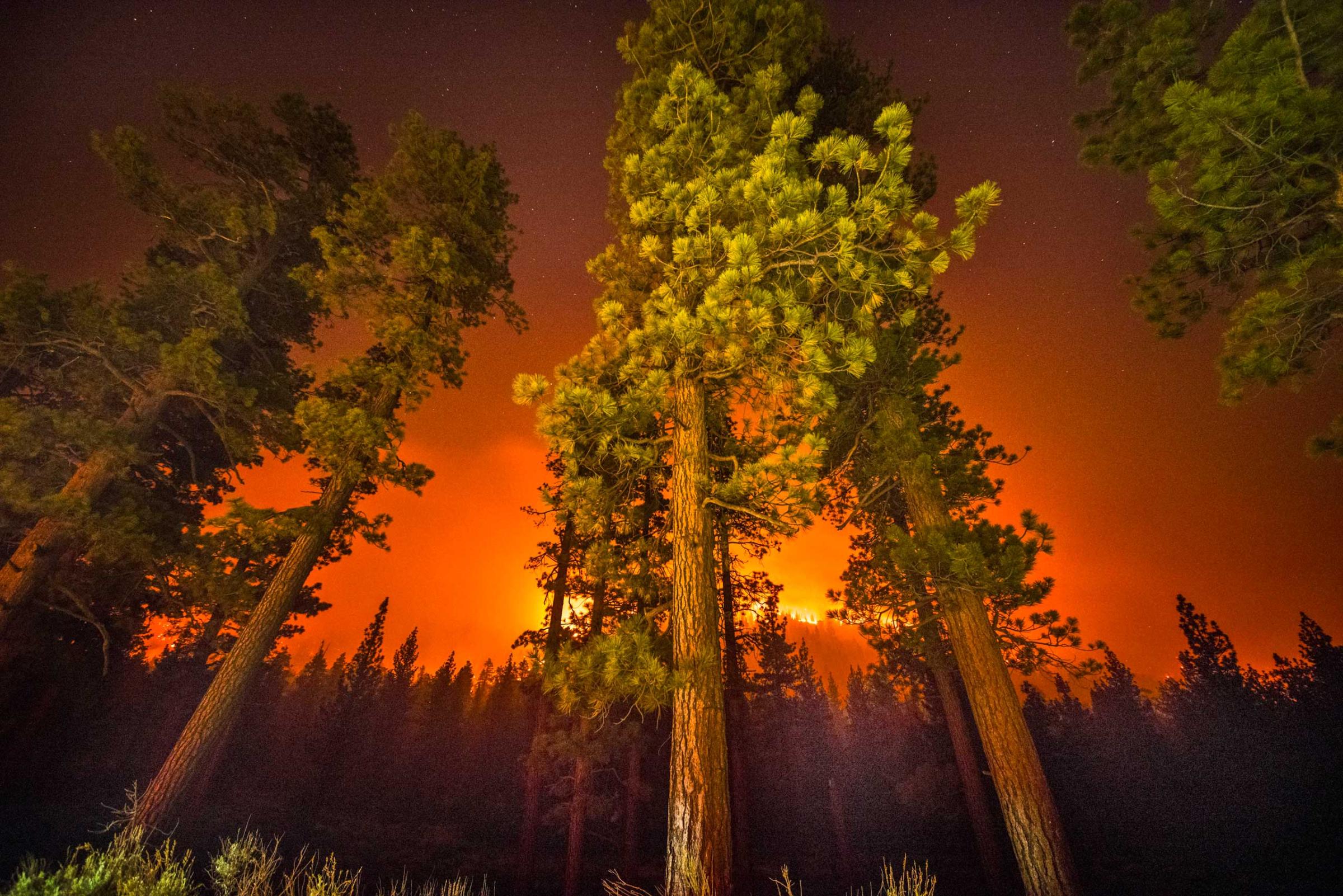

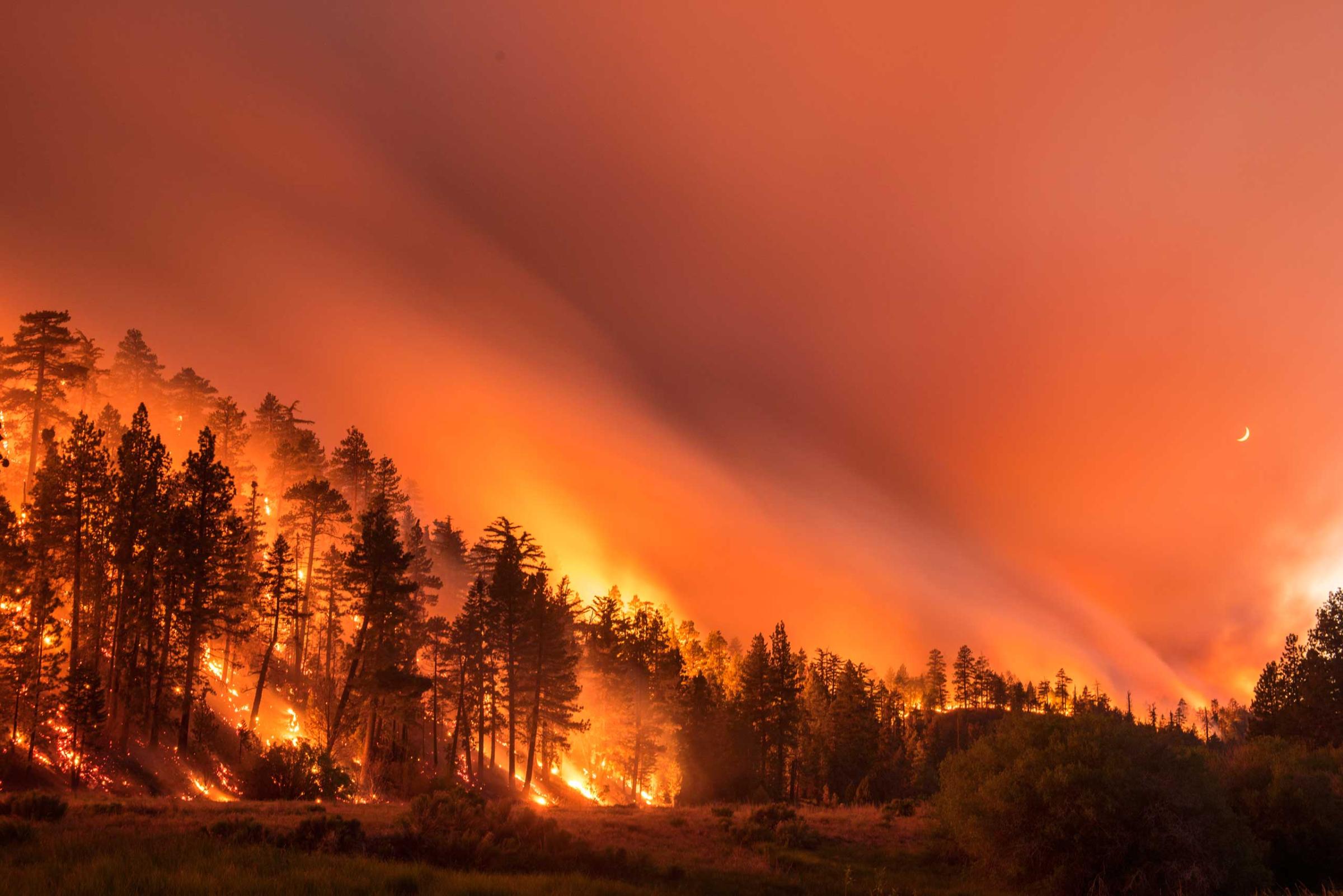
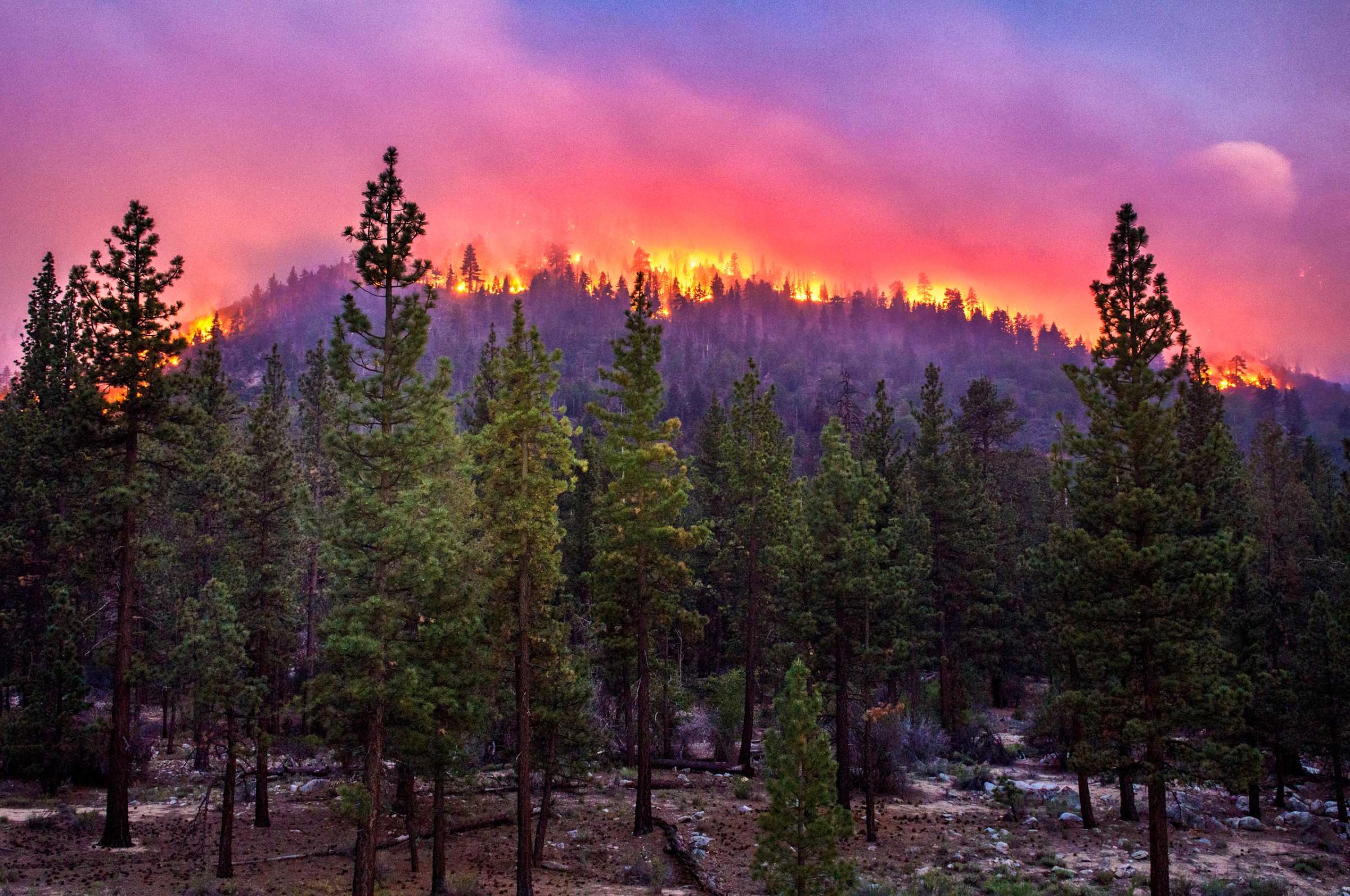
More Must-Reads from TIME
- Cybersecurity Experts Are Sounding the Alarm on DOGE
- Meet the 2025 Women of the Year
- The Harsh Truth About Disability Inclusion
- Why Do More Young Adults Have Cancer?
- Colman Domingo Leads With Radical Love
- How to Get Better at Doing Things Alone
- Michelle Zauner Stares Down the Darkness
Contact us at letters@time.com